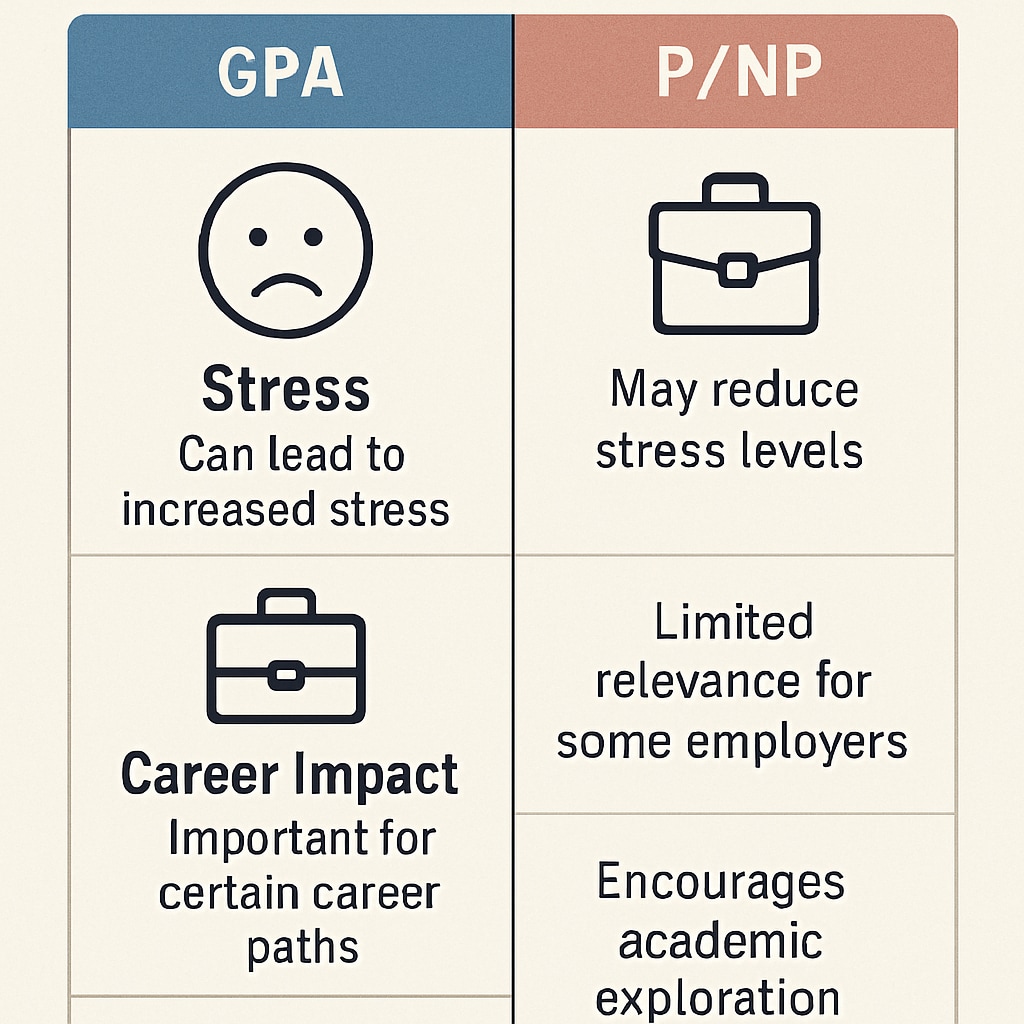Maintaining a high GPA or choosing the Pass/No Pass (P/NP) grading option is a critical decision many college students face. While GPA is often viewed as a cornerstone of academic success and a determinant of career opportunities, P/NP can offer flexibility and stress relief, especially for challenging courses. This article explores how students can balance these academic strategies, weighing the pros and cons of each option while considering their long-term career goals.
Understanding the GPA and P/NP Grading Systems
GPA (Grade Point Average) is a numerical representation of a student’s academic performance, calculated from letter grades. It is widely used by employers and graduate schools to assess an applicant’s intellectual capability and consistency. On the other hand, the P/NP grading system allows students to take courses without impacting their GPA directly. If a student earns a passing grade, it is recorded as “Pass,” and if not, as “No Pass,” with no numerical value attached.
While GPA provides a clear metric for evaluating academic performance, P/NP is often chosen for courses outside a student’s major or for subjects perceived as particularly difficult. The flexibility of P/NP grading can reduce stress, but it requires careful consideration to avoid potential drawbacks.

Pros and Cons: GPA vs. P/NP
Choosing between GPA and P/NP depends on a student’s specific circumstances. Below are some advantages and disadvantages of each grading system:
- GPA:
- Pros: Demonstrates consistent academic excellence, essential for competitive job markets and graduate school applications.
- Cons: High-pressure environment, with grades in every course affecting overall GPA.
- P/NP:
- Pros: Allows exploration of challenging or unfamiliar subjects without risking GPA deterioration.
- Cons: May appear less favorable to employers or graduate admissions if overused, as it provides limited evidence of rigor.
For example, a student aiming for a competitive internship in finance might prioritize maintaining a high GPA in core economics courses. In contrast, someone exploring a new field like art history may opt for P/NP to reduce the pressure of achieving a specific grade.

Making the Right Choice for Career and Academic Goals
To make an informed decision, students should consider the following factors:
- Long-term career goals: Students aiming for graduate programs or competitive industries should prioritize GPA for key courses.
- Course difficulty: Opt for P/NP for electives or courses outside your expertise that could negatively impact your GPA.
- Stress management: Use P/NP strategically to reduce academic pressure while maintaining overall performance.
- Institutional policies: Review your college’s guidelines on P/NP limits, as excessive use may raise red flags during evaluations.
As a result, clear goal-setting and a proactive approach to course selection are key to balancing GPA and P/NP effectively.
Conclusion: Strategic Academic Planning
In conclusion, deciding between GPA and P/NP grading systems requires careful consideration of both immediate academic needs and long-term career ambitions. By thoughtfully evaluating course difficulty, institutional guidelines, and personal stress levels, students can leverage these grading options to their advantage. Whether striving for academic excellence or exploring new fields, understanding the trade-offs between GPA and P/NP is essential for strategic academic planning and career success.
For additional insights on academic grading systems, visit the Grade Point Average page on Wikipedia or explore educational resources on Britannica.


